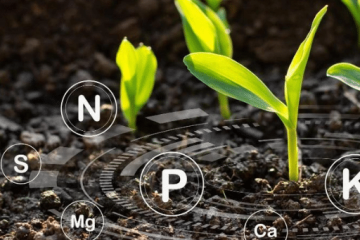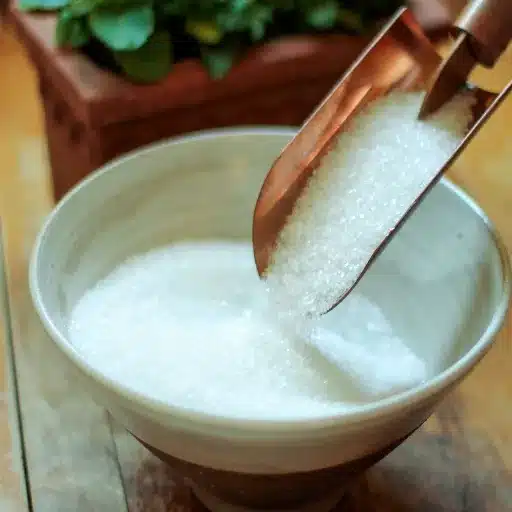Urea fertilizers play a critical role in modern agriculture, serving as a key source of nitrogen essential for crop growth and high yields. However, understanding the pricing of urea—specifically the cost of a 50 kg bag—can often be a complex task influenced by multiple factors, including regional markets, production costs, and global economic conditions. For farmers and agricultural stakeholders, staying informed about these price dynamics is essential to managing costs effectively and optimizing outputs. This article will provide a detailed exploration of urea pricing, breaking down the factors that impact costs, regional variations, and practical tips for navigating the market effectively.
Introduction to Urea
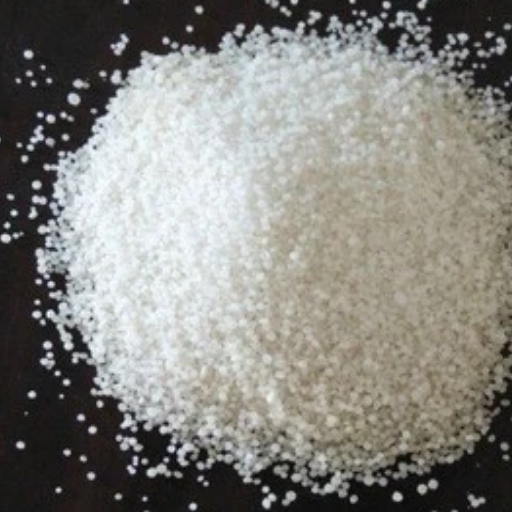
What is Urea?
Urea is a general nitrogen compound established as a fertilizer in agriculture. With the chemical name carbonyl diamide, urea represents one of the essential sources of nitrogen, which is an important element for plant growth and development. It is manufactured industrially with the reaction between ammonia and carbon dioxide under high pressure and temperature, thus producing the most cheap and efficient nitrogen fertilizers.
Typically, the nutrient content of urea is made up of 46% nitrogen, thus being an instance of a fertilizer with the highest nitrogen concentration. Its efficiency is attributed largely to its versatility and solubility in receiving soil incorporation or as a foliar spray. Urea first hydrolyzes in the soil to form ammonium, which is then converted to nitrate and can be absorbed by plants.
Apart from agriculture, urea has been used in industries such as pharmaceuticals, cosmetics, and manufacturing. Yet it remains most relevant in enhancing yields by directly addressing nitrogen deficiencies in soils. However, despite its numerous benefits, the use of urea needs to be properly managed to mitigate the problems arising from, amongst others, nitrogen volatilization and environmental impact.
Chemical Composition of Urea
Urea, chemically known as carbamide, has the molecular formula CO(NH₂)₂. It is an organic compound composed of carbon, oxygen, nitrogen, and hydrogen atoms. These elements are arranged with a central carbon atom double-bonded to an oxygen atom and single-bonded to two amine groups (-NH₂). This simple organic structure makes urea a highly versatile compound in various scientific and industrial applications.
Urea is synthesized naturally in the liver as part of the urea cycle, where excess nitrogen from amino acid metabolism is converted into a less toxic form for excretion. On an industrial scale, urea is produced through the Haber-Bosch process, which combines ammonia (NH₃) with carbon dioxide (CO₂) under high pressure and temperature. This method ensures the compound’s high purity and consistency, making it ideal for widespread applications in fertilizers and other sectors.
Its chemical properties, such as high water solubility and reactivity with acids and bases, contribute to its effectiveness in addressing agricultural needs. Additionally, the stability of urea under normal storage conditions and its ability to supply nitrogen in a concentrated form makes it a preferred choice for enriching soil. Understanding its chemical foundation ensures better utilization and management of urea across disciplines.
Widespread Uses of Urea in Agriculture and Industry
Urea is one of the most efficient and cost-effective nitrogen fertilizers used in agriculture throughout the world. It is a major source of nitrogen responsible for plant growth and maturity. Urea with 46% of nitrogen content on the basis of weight allows the producers to supply their crops with proper nutrition that leads to yield enhancement, reduced chances of nutrient deficiency, and sustainable farming practices. This fertilizer is commonly in the application to almost all kinds of crops that including grains, vegetables, and fruits.
Besides agriculture, various industrial applications call for urea. It is a critical raw material for the manufacture of resins, adhesives, and plastics such as urea-formaldehyde used for wood-based products. The manufacture of melamine is another process that urea is used in; melamine is important for high-performance laminates and coating. It also finds use in medicine since urea acts as a precursor for some drugs. This versatility is due to its high reactivity and its ability to confer stability on compounds formed with other materials.
The other use of urea includes environmental pollution control. It is employed by selective catalytic reduction (SCR) systems to inhibit nitrogen oxide (NOx) emissions from diesel engines, thus improving air quality. This particular use goes beyond urea’s economic and agrarian importance to hint at other avenues through which urea can be harnessed for meeting crucial environmental woes. Be it in agriculture, industries, or environmental protection, urea remains eternal versatility.
Current Market Trends and Pricing
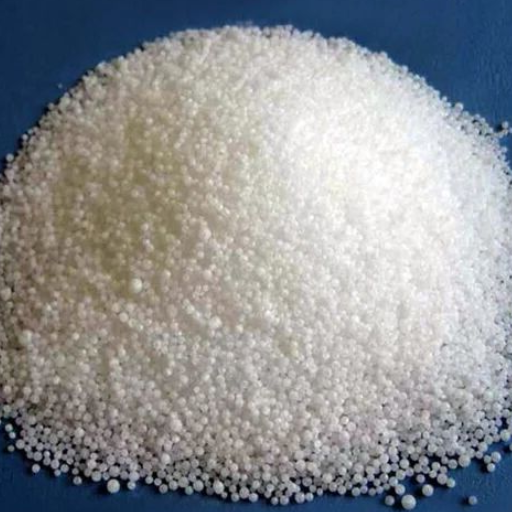
Recent Changes in Urea Prices
The urea market, worldwide, has seen significant fluctuations due to geopolitical tensions, supply chain disruptions, and shifting demand trends. There have been periodic spikes in prices due to raw material shortages, especially natural gas, which is a core input material in the production setup. Increased energy costs in key producing areas have only added to production costs, thus influencing the global price scenario.
Many recent studies have shown that price trends in urea have been upward in certain regions, where agricultural demand spikes after seasonal planting periods; however, in some other markets, prices fell momentarily as inventories built up after being depleted. This pricing scenario, perpetuated by the export bans in some leading exporters against the import requirements of key agricultural economies, forces stakeholders to keep track of regional and international developments for a fair estimate of the market price.
Such volatility emphasizes the delicate equilibrium between the resilience of supply chains and various other external macroeconomic factors determining urea pricing behavior.
Supply and Demand Dynamics
When it comes to supply and demand, a host of factors are behind the movement of urea, ranging from production capacities, availability of feedstock, demand cycles in agriculture, and even geopolitical overlays. On the supply front, urea is produced using natural gas, both as feedstock and for energy. Changes in natural gas prices, along with any constraints or expansion on regional production, directly influence the availability and price formation of urea. The major producers are China, India, and the United States, but export policies and internal demand also alter the global supply picture.
A few other demand-side issues are that agricultural requisites greatly dictate the consumption of urea, as it is one of the fertilizers that enrich the nitrogen content. Cyclical peaks of demand arise through seasonal planting and crop patterns, more often associated with growing cycles in major farming areas. Furthermore, trends in sustainable agriculture and precision farming also have a say in the adoption rates and consumption quantities of urea.
The mutual interaction makes this tightly co-dependent system capable of bearing a shock like a production hit by a natural calamity or a trade controversy arising out of geopolitical causes. It is thus very important for all stakeholders to constantly keep an eye on and predict changes through advanced modeling so that they become able to foresee a shift and guard against risk in this very complicated supply-demand balance.
Analysis of Urea Price Trends
Price trends of urea are influenced by a complex array of international factors consisting of production costs, raw material availability, natural gas, international trade laws, and regional demand-and-supply considerations. In the sense of history, urea prices have seen high volatility. This volatility, inter alia, can be attributed to shifts in global energy prices, especially for natural gas, which is a key raw material used in urea production systems. Export bans, or sanctions placed by any important producing country, can hamper the global supply chain mechanism, thereby resulting in sharp price escalations or contractions.
Recent statistics state that global prices of urea have witnessed upward trends mainly spurred by rising natural gas prices in key producing areas and curbed production capacities in certain countries. On the other hand, demand coming from the agricultural sector has further exacerbated consumption levels, owing to the food requirement and soil health management. Seasonal trends contribute to the periodic soaring of prices, given that fertilizers and urea are in high demand during planting seasons.
Therefore, most forecasting of urea price trends can be done only when the most advanced analytical tools, including econometric modeling and real-time intelligence systems, are used. By interfacing with macroeconomic indicators, energy market trends, and trade policy developments, stakeholders may predict price movements, hedge financial risks, and optimize procurement strategies in this highly complex global market.
Factors Influencing Urea Prices
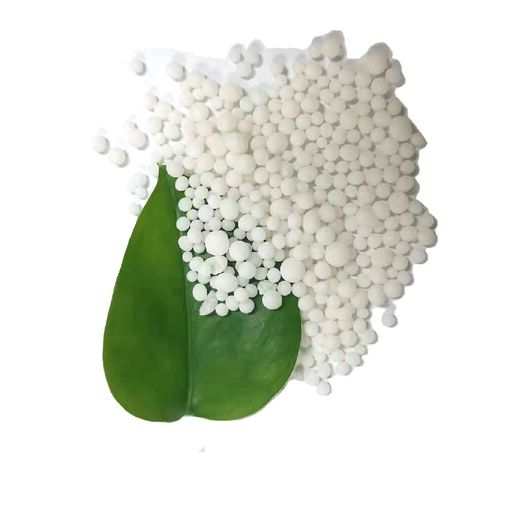
Production Costs and Their Impact
Production costs of urea are the most critical factor affecting the market price. They are interdependent variables. Therefore, an understanding of the components of costs of production and their contributory proportions would be required for the price analysis and hence for deciding strategies in the urea industry. The following are the five factors determining the costs of urea production:
- Natural Gas Prices: It is the main feedstock; natural gas goes into the manufacture of ammonia, which is in turn used in the production of urea. Fluctuations in natural gas prices thus directly influence the costs of production. For instance, a 10% increase in natural gas price causes an increase of about 6-8% in the overall urea production costs, thereby exerting significant pressure on the production expenses.
- Energy Consumption: Energy-intensive processes characterize urea generation, requiring continuous energy input during the ammonia formation stage and the subsequent urea synthesis stage. Variations in electricity and fuel prices between regions form the cause of changes in production costs depending on each geographical location.
- Capital Expenditures (CapEx): Initial investments in erecting and maintaining production facilities become part of the long-term cost structure. Upgrades required for environmental compliance or improved efficacy also burden the producer financially, thereby impacting its operational margins.
- Labor and Operational Costs: Operating costs include wages for skilled labor; costs of maintenance; and costs for other inputs such as catalysts for the production process. Such costs differ from one country or region to another depending upon industrial regulations and wage standards.
- Environmental Compliance and Carbon Costs: Increasingly stringent environmental controls, especially those relating to carbon emissions from urea plants, impose compliance-related costs. Whereas carbon taxes will add directly to production costs, obliged expenditures in carbon capture will do so indirectly from a regional-business-competitiveness point of view.
All these cost factors can be analyzed in greater detail so that the stakeholders may find ways to mitigate production cost volatility, enhance operational efficiencies, and create long-term market competitiveness.
Global Trade Policies and Urea Pricing
Global trade policies play a much greater role in determining whether urea price changes since they govern the flow of merchandise across international markets and hence, production and distribution costs. Tariffs, export restrictions, and import duties from among the legislative or interventionist measures governments may use in regulating urea trade. Hence, when a country seeks to protect domestic fertilizer industries, it may levy high tariffs on imported urea, thus inflating prices in the local markets. On the other hand, export bans or quotas imposed in times of global fertilizer shortages may tear apart supply chains, and open the way for price hikes in the importing countries.
Conversely, free-trade agreements (FTA) between countries would promote healthier competition in the pricing arena by removing trade barriers. The consequences of geopolitical tension and sanctions against major urea-producing nations, however, introduce uncertainty and volatility in global supply chains. For example, supply curtailments arising from trade sanctions of main exporters would compel the dependent import-based nations to turn to alternative sources at elevated costs.
Other sources of price distortion are government subsidies and other forms of support for domestic urea producers. This creates distortions in the market equilibrium and hence, global price divergences. There have been numerous pronouncements on these practices by the World Trade Organization (WTO) as triggers for trade disputes, further backing the proposition that balanced and transparent trade policies are of paramount importance.
By understanding the trade intricacies, stakeholders can foresee risks and tailor their procurement and production strategies accordingly to guarantee a degree of resilience when trade-induced urea price fluctuations occur.
Transportation Logistics and Costs
The coordinates of transportation logistics and costs are critical to the global supply chain, influencing the accessibility and cost of goods. While several factors need coordination for the successful execution of logistics planning, some of the prominent ones include route selection, mode of transport, and regulatory norms across jurisdictions. Selection of freight mode- road/rail/sea/air- remains a critical determining factor, driven largely by cargo requirements, time of delivery, and cost considerations.
Some factors that impact transportation costs include fuel prices, labor charges, infrastructure fees, and, in certain cases, geopolitical roadblocks to the proper global flow of trade. For example, oil prices are inversely related to freight rates; the higher the oil price, the more expensive it is to freight goods, especially in the case of long-haul shipments and air travel. A good example is congestion at major seaports or delays because of customs clearing bottlenecks, which may raise costs and lead to supply chain inefficiencies.
In recent times, the rise of logistics technologies like real-time tracking systems and AI-based route planning has helped curb costs and optimize delivery efficiency. This shortening of lead times enhances transparency and arms stakeholders with actions relevant to data to forecast demand and choose their resources accordingly. It is from this perspective that a complete understanding of these logistics is required to shrink incurring costs while safeguarding the availability of goods in competitive markets.
Regional Price Comparisons
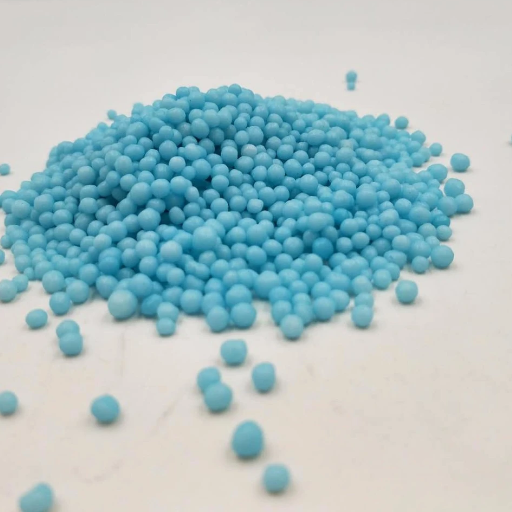
Urea Prices Across Different Countries
Prices for urea change drastically from one country to another depending upon production capacity, accessibility to raw materials, cost of energy, government policies, and many others. For example, countries endowed with plenty of natural gas, considered a major raw material in urea production, usually have the lowest production costs. This would allow them to price more competitively in their domestic markets and exports. On the contrary, countries that have to import both the raw materials as well as the finished product could face higher prices of urea because of additional costs such as fluctuations in the international market, shipping, and tariffs.
Besides, factors such as geopolitics and regional demand truly contribute to price disparities. For instance, in times of strong demand from the agricultural sector, prices may skyrocket in regions that rely on urea imports; on the other hand, political instabilities disrupting supply may increase costs beyond proportion in some markets. Countries with highly developed logistics networks and strong production capabilities such as China or the US can address these issues quite effectively compared to countries with relatively less-developed infrastructure.
From a personal point of view, a study of regional price variations of urea would bring to light the inherent significance of localized factors in global markets. In understanding these dynamics, more strategic decisions can be made, especially by industries that rely heavily on fertilizers. Hence, it is obvious that to gain on opportunities presented by the market and to minimize risks arising from cost volatility or the availability thereof, keeping in tune with shifts in the pricing and supply chain of urea is vital.
Factors Behind Regional Price Differences
A series of economic, logistical, and geopolitical factors create regional price differences in urea. The production cost variances create differences related largely to the availability and cost of natural gas, a primary feedstock employed in urea manufacture. Countries blessed with cheap and abundant natural gas resources, such as Qatar and Russia, enjoy an advantage in production. On the other hand, regions that are forced to import natural gas, such as parts of Europe, find their manufacturing costs higher, which get transferred to urea prices.
From logistics to transportation systems also, there is a lot in between that cannot be ignored. Distribution costs may be affected by factors such as closeness to port city areas, the rail system, and the internal transportation system. For instance, higher prices for landlocked regions are charged for added complexity to shipping and distance when compared to coastal ones with nearby ports.
Trade restrictions and policies also create room for regional disparities. They create price barriers based on the capability of different countries to engage fairly in urea trade discussions. Seasonal variations in agricultural demand mainly affect price differences, especially in areas dependent on fertilizers for their primary crop cycle.
Lastly, global geopolitical developments such as conflicts or disruptive incidents in critical supply routes can fill in for price volatility. For example, disruptions in the supply chain of nitrogen at a global scale caused by trade restrictions or production stoppages will ripple through interconnected markets, deepening regional divergence.
Understanding how these interrelated factors work will be critical for stakeholders as they seek to manage to adapt to market variations efficiently and ensure the sustainability of the operational framework in these changing times.
Impact of Market Fluctuations on Urea Pricing
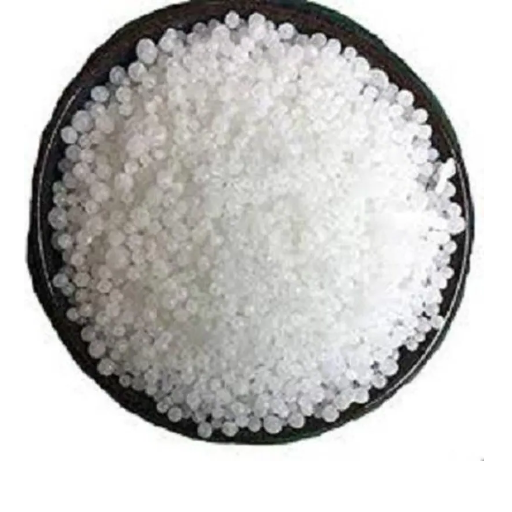
Effects of Agricultural Sector Changes
Agricultural changes can substantially influence urea pricing since it is an important nitrogen fertilizer extensively used. Here are five leading factors with their impacts in detail:
- Crop Cultivation Pattern: Changes in crop patterns are primarily geared towards demand-oriented mechanisms, weather changes, or policy-induced allocations and hence affect urea consumption directly. Growing wheat, rice, and corn are high nitrogen input requiring crop types and hence their growing period sees a higher demand for urea compared to legumes.
- Seasonal Crop Production: Different planting or harvest seasons witness changes in the demand for urea. This demand peaks during planting periods, which in turn causes temporary spikes in urea prices. In contrast, during the off-season, demand for urea is low, stabilizing or falling prices.
- Shift Toward Sustainable Practices: This shift has, in some areas, reduced the reliance on synthetic fertilizers such as urea through increased emphasis on organic and sustainable farming practices. For example, some countries report a drop in urea consumption in their structures to encourage the use of biofertilizers and other eco-friendly inputs.
- Farmer Input Cost Changes: The changing prices of agricultural inputs such as seeds, equipment, and labor influence the use of fertilizers. When production costs go too high for the farmers, they tend to spend less on fertilizers such as urea, which cuts down the overall demand in the market.
- Government Subsidies and Incentives: Policy decisions, including granting subsidies for fertilizer, heavily influence the dynamics of urea pricing. For instance, where subsidies are aggressively pushed forth, urea prices tend to be abnormally low. Should those incentives be reduced or completely removed, the price would soar alarmingly. India’s subsidy program for urea is one such case that has been well-documented to influence markets domestically and internationally.
Each also forms part of the web connecting agricultural-related activities to the pricing of urea that perpetuates the complex interaction existing between sectoral trends and fertilizer economics.
Influence of Industrial Sector Dynamics
With the industrial sector playing a pivotal role in determining demand for urea, applications for urea are varied on the cosmopolitan, non-agricultural scale due to its chemical properties. The following are five primary influences of industrial sector dynamics on urea price and availability:
- Feedstock Cost and Energy Prices: Having its production bearing on Ammonia that is obtained from natural gas or coal as a feedstock, global-level energy pricing fluctuations are expected to have significant effects on the cost of production, which is passed down indirectly to the pricing of urea.
- Manufacturing and Technological Innovations: With enhancements in urea technology geared towards production optimization and cost reduction by improving catalyst efficiency or other energy-saving means, it directly affects market prices.
- Demand from Industrial Applications: Urea is also used in manufacturing industries of melamine, adhesives, and plastics, and as a reducing agent, being used in SCR (Selective Catalytic Reduction) systems to reduce nitrogen oxides (NOx emissions). An increase in demand from these industries could tighten the supply and drive the price higher.
- Environmental Issues and Regulations: Increased environmental awareness and more stringent emissions regulations are affecting the industrial demand for urea, especially in its use as a NOx neutralizer. Compliance regulations will have an impact on both consumption and markets.
- Global Trade and Supply Chain Disruptions: Industries require uninterrupted supply chains for their raw materials. In the event of any disruption, say due to geopolitical tension or logistical bottleneck, the supply of urea would get constrained, resulting in enormous price volatility in both the domestic and international markets.
This nexus of industrial facets simultaneously shapes the prices of urea and bestows upon it a crucial role in a wide spectrum of manufacturing applications. To foresee and avoid the result of these factors on market stability, analysis, and data collection strategies must be comprehensive.
Staying Updated on Urea Market Changes
Using a multidimensional approach presents an effective way to monitor changes in the urea market. Robust data collection frameworks are instrumental in this process; they merge historical and real-time information from trusted sources, including governmental trade reports, market indexes, and other industry analyses. Although market dynamics for urea are driven by factors such as the global supply chain, energy prices, agricultural demand cycles, and geopolitical events, there is an increasing need for continuous analysis of these domains to anticipate trends and mitigate risks. A combination of quantitative forecasting methods and qualitative inputs develops an integrated system to deal with the uncertainty of urea prices and availability.
At the same time, employing some automated monitoring software with configuration to the industry, including production capacity changes, alterations in global trade policies, and natural gas prices as a feedstock-would bring additional value. Artificial intelligence provides deeper visibility into pattern recognition within market analyses, thereby anticipating shifts in prices and any disruption to supplies. Together with insights from professional market research publishers and highly localized data about the demands in agriculture inputs, these tools constitute a full picture of the factors influencing the urea landscape.
Finally, establishing and maintaining a network of industry stakeholders is mandatory for any professional trying to stay ahead in the urea market. Working alongside suppliers, distributors, agricultural economists, and policymakers assures access to real-time market intelligence and knowledge-sharing opportunities. By actively participating in industry seminars, webinars, and global trade shows, stakeholders stay abreast of recent innovations, laws, and economic topics that influence urea markets. Relying on the intertwined resources of technology and people, individuals and organizations ensure their preparedness to adapt to the complex fluctuations that characterize this critically important sector.
References
Frequently Asked Questions (FAQ)
Q: What is the current urea 50 kg price?
A: The current urea 50 kg price can vary based on the region, supplier, and market conditions. It’s best to check with local retailers or wholesalers for the most accurate pricing.
Q: Why is urea considered a high-quality nitrogen fertilizer?
A: Urea is considered a high-quality nitrogen fertilizer because it contains a high concentration of nitrogen (typically 46 percent), which is essential for promoting crop growth and improving soil health.
Q: How does the price of urea affect agricultural practices?
A: The price of urea directly impacts farmers’ ability to invest in fertilizers, which can affect crop yield. Higher prices may lead to reduced application rates or the use of alternative fertilizers.
Q: Where can I buy 50 kg urea fertilizer bags?
A: You can buy 50 kg urea fertilizer bags from local agricultural supply stores, online retailers, or directly from wholesalers. It’s advisable to compare prices and product quality before purchasing.
Q: What factors influence the urea price per ton?
A: Factors influencing the urea price per ton include global demand, production costs, shipping expenses, and market competition. Additionally, seasonal trends in agriculture can also affect pricing.
Q: What are the differences between prilled urea and granular urea?
A: Prilled urea consists of small, round granules that dissolve quickly, making it suitable for fast-acting applications. Granular urea is larger and may release nutrients more slowly, which can be beneficial for certain crops.
Q: How should urea fertilizers be stored to maintain quality?
A: Urea fertilizers should be stored in a cool, dry place in their original packaging to protect them from moisture and contamination. Proper storage helps maintain their high purity and effectiveness.
Q: Can the urea 50 kg price fluctuate seasonally?
A: Yes, the urea 50 kg price can fluctuate seasonally due to increased demand during planting seasons and changes in agricultural practices. It’s important to monitor market trends for the best buying opportunities.
Q: What is the role of urea in crop management?
A: Urea plays a crucial role in crop management as it provides a readily available source of nitrogen, which is vital for plant growth, improving soil fertility, and enhancing overall crop yield.
Q: What should I consider when comparing fertilizer prices?
A: When comparing fertilizer prices, consider factors such as nutrient content, type of fertilizer (e.g., urea vs. compound), packaging size, and the supplier’s reliability to ensure you are getting the best value for your investment.


